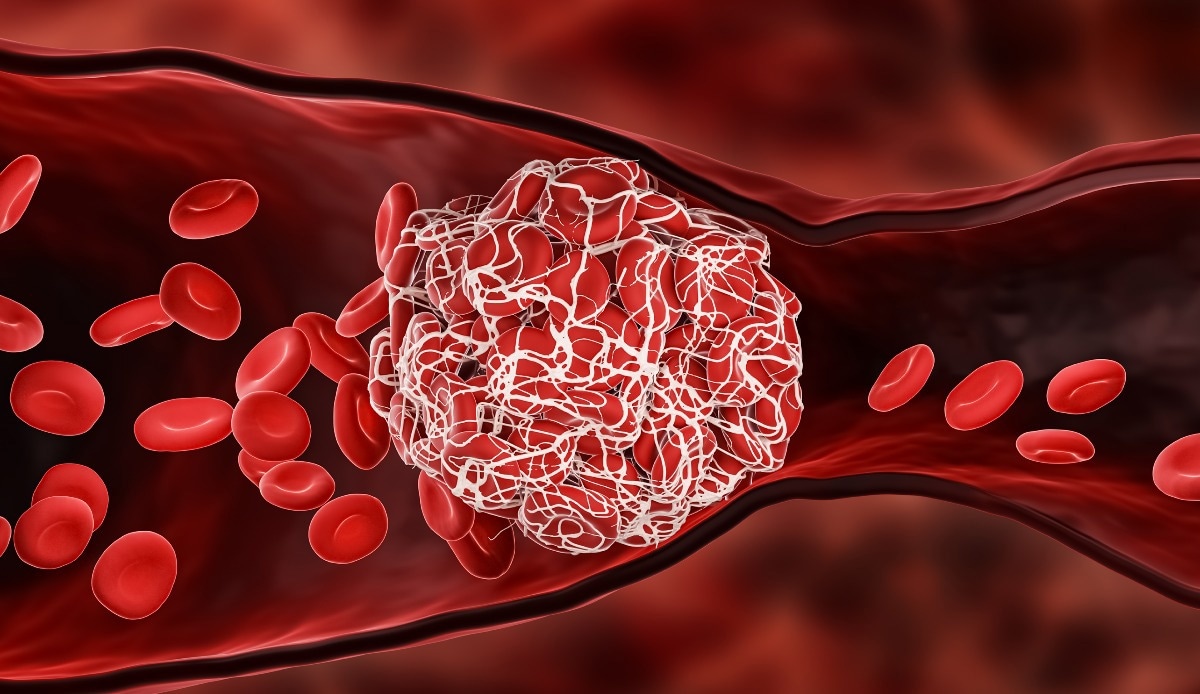In a recent study published in Circulation, researchers explored the association between coronavirus disease 2019 (COVID-19) and vascular thrombotic events using a population-wide cohort study across England and Wales.
 Study: Association of COVID-19 With Major Arterial and Venous Thrombotic Diseases: A Population-Wide Cohort Study of 48 Million Adults in England and Wales. Image Credit: MattLphotography/Shutterstock
Study: Association of COVID-19 With Major Arterial and Venous Thrombotic Diseases: A Population-Wide Cohort Study of 48 Million Adults in England and Wales. Image Credit: MattLphotography/Shutterstock
Background
The COVID-19 pandemic caused by severe acute respiratory syndrome coronavirus 2 (SARS-CoV-2) has resulted in long-lasting consequences on human health, with patients experiencing a marked reduction in fitness, cognitive impairment, and cardiac problems months after being discharged from the hospital.
Studies have shown that the SARS-CoV-2 infection induced a proinflammatory and prothrombotic state with notable increases in arterial and venous thrombotic events. However, a detailed analysis of SARS-CoV-2-induced long-term risk of vascular diseases and its associations with demographic characteristics and comorbidities is lacking.
About the study
The present study compared COVID-19 diagnosis data with incidences of major vascular thromboses using population-wide electronic health records between January 1 and December 7, 2020, from England and Wales.
The comparisons were made based on sex, age, and race. The incidences of arterial and venous thromboses were estimated in COVID-19 patients with and without hospitalization and people who had not been diagnosed with COVID-19. A positive polymerase chain reaction (PCR) or antigen test or confirmed diagnosis from a primary or secondary care facility was used to identify COVID-19 diagnoses.
The investigated outcomes included arterial thromboses such as myocardial infarction and ischemic stroke, venous thromboembolic events such as pulmonary embolism and deep venous thromboses, and other vascular events including transient ischemic attack, intracerebral or subarachnoid hemorrhage, and angina.
Hazard ratios were estimated by comparing the incidence of vascular thrombotic events in individuals with COVID-19 diagnoses and individuals not diagnosed with COVID-19.
Results
The results indicated a significant increase in incidences of arterial thrombosis and venous thromboembolism in people diagnosed with COVID-19 compared to individuals without COVID-19 diagnoses, both of which declined with time.
A total of 48 million people were included in the cohort study, of which the number of people with COVID-19 diagnoses who were hospitalized and not hospitalized in the 28 days following diagnosis was 125985 and 1319789, respectively. The incidences of thrombotic events were higher, and the decline in numbers was slower in hospitalized COVID-19 patients than in non-hospitalized individuals.
Demographic factors such as age and sex did not seem to influence the incidence of thrombotic events. However, race seemed to be an important factor, with people of Black and Asian ethnicities having higher incidences of thrombotic events than White people. The authors believe that the association of race with the increase in thrombotic events and higher rates of COVID-19-related mortality is influenced by factors such as occupation, living conditions, deprivation, and preexisting health conditions, among others.
In the 41.6 million person-years follow-up in England, the numbers of first arterial thromboses and venous thromboembolisms were 260279 and 59421, respectively. The adjusted hazard ratios for comparisons of arterial thromboses with and without COVID-19 diagnoses declined from 21.7 to 1.34 from week 1 to weeks 27 – 49. Similarly, the hazard ratios for venous thrombotic events decreased from 33.2 to 1.80 in the same duration.
Across the population, a 0.5% increase in the risk of arterial thromboses and a 0.25% increase in venous thromboembolism risk were observed, which, in 1.4 million COVID-19 diagnoses, corresponds to 7200 and 3500 cases of arterial and venous thrombotic events, respectively.
Conclusions
Overall, the study reported a substantial increase in incidences of arterial and venous thrombotic events in the weeks following COVID-19 diagnoses in England and Wales, with the numbers decreasing with time, albeit comparatively slower for venous thromboembolism events.
The results highlight the need to use COVID-19 vaccines to prevent severe disease manifestations requiring hospitalization, as the incidence of major thrombotic events was higher among COVID-19 patients who were hospitalized than those who were not.
Furthermore, the authors believe that patients discharged after severe COVID-19, especially high-risk vascular disease cases, need to be prescribed secondary preventative therapies to reduce infection-associated thrombotic events and educated about the importance of reviews and follow-ups after discharge.
Given the rapidly evolving variants that exhibit immune evasion and the emerging data on the various post-COVID-19 complications, there is a critical need for improved vaccines and therapies to reduce COVID-19 severity, as well as new treatment methods to reduce infection-associated thrombotic events.
Journal reference:
- Knight, R., Walker, V., Ip, S., Cooper, J. A., Bolton, T., Keene, S., Denholm, R., Akbari, A., Abbasizanjani, H., Torabi, F., Omigie, E., Hollings, S., North, T.-L., Toms, R., Jiang, X., Angelantonio, E. D., Denaxas, S., Thygesen, J. H., Tomlinson, C., & Bray, B. (2022). Association of COVID-19 With Major Arterial and Venous Thrombotic Diseases: A Population-Wide Cohort Study of 48 Million Adults in England and Wales. Circulation. doi: https://doi.org/10.1161/circulationaha.122.060785 https://www.ahajournals.org/doi/10.1161/CIRCULATIONAHA.122.060785